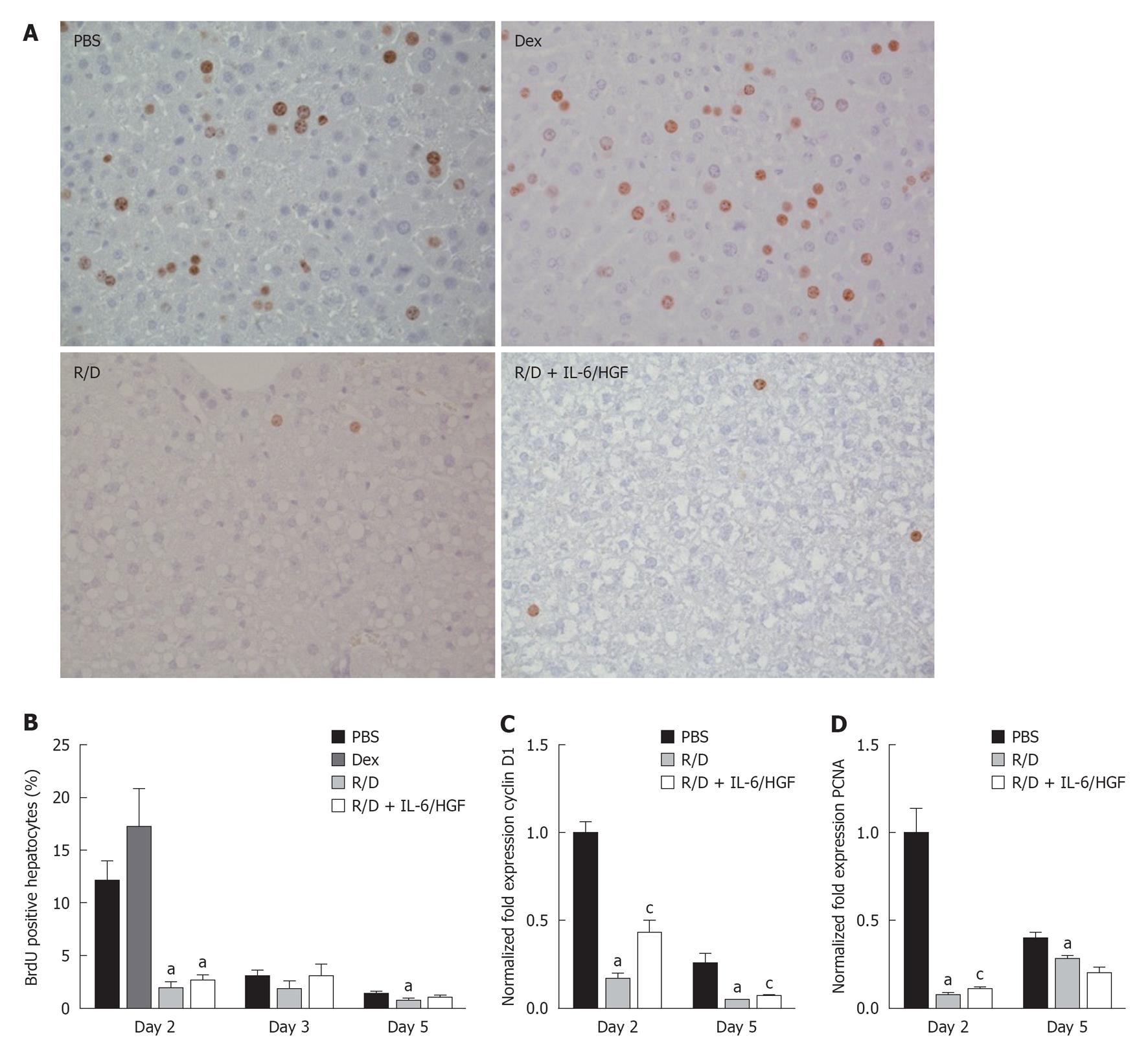Copyright
©2013 Baishideng.
World J Transplant. Sep 24, 2013; 3(3): 36-47
Published online Sep 24, 2013. doi: 10.5500/wjt.v3.i3.36
Published online Sep 24, 2013. doi: 10.5500/wjt.v3.i3.36
Figure 2 Effects of mammalian target of rapamycin inhibition on hepatocyte proliferation.
A, B: Livers were processed for immunohistochemistry on 5-Bromo-2’-deoxyuridine (BrdU) to quantify hepatocyte proliferation. A: Representative pictures (× 400) of hepatocyte proliferation at day 2 after partial hepatectomy (PH); B: Quantification of hepatocyte proliferation at day 2, 3 and 5 after PH; C, D: Hepatic gene expression levels of cyclin D1 and proliferating cell nuclear antigen (PCNA) were determined by quantitative reverse transcription-polymerase chain reaction and normalized against TATA binding protein. C: Expression levels of cyclin D1 at day 2 and 5 after PH; D: Expression levels of PCNA at day 2 and 5 after PH. Data are shown as mean ± SE. aP≤ 0.05 vs phosphate buffered saline (PBS); cP≤ 0.05 vs Rapa-Dex (R/D). HGF: Hepatocyte growth factor; IL-6: Interleukin 6.
- Citation: Fouraschen SM, de Ruiter PE, Kwekkeboom J, de Bruin RW, Kazemier G, Metselaar HJ, Tilanus HW, van der Laan LJ, de Jonge J. mTOR signaling in liver regeneration: Rapamycin combined with growth factor treatment. World J Transplant 2013; 3(3): 36-47
- URL: https://www.wjgnet.com/2220-3230/full/v3/i3/36.htm
- DOI: https://dx.doi.org/10.5500/wjt.v3.i3.36









